Stéphane Lacrampe, Obeo
With an engineering background, Stéphane Lacrampe boasts more than 15 years' professional experience.
In the past, he has been CTO of a London-based start-up and today he is at the helm of Obeo as its president.
Co-founder of Obeo, he is responsible, in particular, for business development.
Étienne Juliot
With a Master's degree in software architecture from the University of Nantes, Étienne Juliot has more than 12 years' experience in the field of software engineering and MDE.
Co-founder of Obeo, he is currently vice-president of the company with specific responsibility for international development.
Very involved in several Open Source communities such as Eclipse and PolarSys, he lectures all over the world and is a member of the Eclipse Foundation's board of directors.
Cédric Brun
Cedric leads the EcoreTools and Amalgamation components, maintains the Modeling Package, is commiter on several Eclipse projects (Sirius, Acceleo, Mylyn),
and is a member of the Architecture Council, Planning Council and the Modeling PMC.
He also is the CTO of Obeo, building a broad range of products, from software modernization to enterprise architecture and software factories.
Laurent Broudoux
Laurent is the Principal SOA and IT Architect at Covéa, a leading insurance group in France. Within Covéa he is a contributor to the Digital
Transformation program, involved into Information System transformation and definition of Web and Mobile integration strategies. Within MMA
Insurance - a Covéa company - he used to led SOA and JEE teams and was in charge of defining the technical foundations on: Enterprise Architecture
method and tooling, SOA urbanization principles and infrastructure, Model Driven Engineering and continuity with the software factories.
Lars Geyer-Blaumeiser
Since 8 years Lars is responsible for release engineering and infrastructure development of Eclipse products for bigger Eclipse based IDE products
in several divisions of Bosch and ETAS. In this regard he manages the open source components used within these Eclipse projects. Currently he is
involved in a new product development which builds both a textual and graphical modeling tool using XText and Sirius. He is particularly interested by
Agile Development, Continuous Delivery in a product organization and Eclipse based Business Models.
Stéphane Barbey, Paranor
Stéphane is the CTO of Paranor AG, a Swiss software company based near Bern, Switzerland. For many years, he has been an architect and project leader on
large and innovative projects, helping Paranor' customers to craft their visions and convert them into products. He is a true believer of the virtues of
modeling and agile development methods. Stéphane holds a PhD in Software Engineering from the Swiss Federal Institute of Technology, in Lausanne.
Alexandra Boeuf, Airbus
Alexandra joined Airbus in 2006. Since one year, she is in charge of setting up a common Eclipse-based workbench to support all Flight Physics capabilities like
fluid computation, design optimization, flight simulation… She his also contributing to promote the Eclipse community at Airbus.
Before 2006, she was working for Dassault Systems as developer of CAD-CAM capabilities in CATIA software.
Arnaud Le Griel, French Ministry of Defense
Engineer and consultant in IT services companies during more than ten years, specialist in software engineering workbenches, modeling, model-driven-engineering (MDE),
code generation and methods. He joined the French Ministry of Defense in 2010, to work in the Methods & Quality service of the Defense IT Support Center (CASID).
Didier Feret, French Ministry of Defense
Architect in the Architecture service of the Defense IT Support Center (CASID). Tools manager for the SAFR@N project (Industrialisation of Normalized Applications
Analysis and Development) since 2010. In particular, he is in charge of the analysis and design workbench based on Sirius technology.
Ståle Walderhaug, SINTEF
Dr Ståle Walderhaug works for SINTEF ICT as a research manager. His PhD in the field of model-driven software development for healthcare information systems where he designed and evaluated a MDD toolchain for standardised service development for homecare.
Walderhaug has experience from several research projects in Norway and Europe where model-driven development in an Eclipse environment has been key a component (e.g. MPOWER, ModelWare and UniversAAL). Together with his colleagues at SINTEF they now carry out research in the avionics domain with DSML design and tool development as part of the European project ASHLEY (EC Grant #605442)
Walderhaug is also an adjunct associate professor at the Arctic University of Norway – UiT in Tromsø where he gives a telemedicine and e-health course for master students in informatics.
Christophe Boudjennah, Obeo
Christophe is a senior system/software architect and project manager.
His experience leads him to work for various domains such as defense, IT, or the Automotive industry. Most of his career has been focused on Systems Engineering for complex embedded
systems, whether it is from the "methods and tools provider" point of view or from the operational one. He is now working for Obeo, and is dealing with various open source and systems
engineering related topics. One of his current main responsibilities is to be the project coordinator of Clarity, a large R&D project whose purpose is to open-source Capella (an industrial
workbench for system engineering).
Mélanie Bats, Obeo
Mélanie works as a software developer at Obeo. In her daily work, she is mainly focused on the development of modeling tools with Sirius (UML Designer/SysML Designer).
In her free time she is interested in Arduino stuff and contributes some Eclipse plugins for cross compilation. She is also a free software activist who has organized
and participated in free software events in the Toulouse area.
Frédéric Madiot, Obeo
Frederic is Marketing and Products Manager at Obeo. He has 20 years of experience in developing model-driven tools to industrialize the development of new applications
and the modernization of existing systems.
Loredana Chituc, Obeo
Loredana is graphic designer and webmaster at Obeo. In addition to her main job which consists in producing nice visuals for Obeo's websites and communication materials,
she regularly puts her artistic and digital skills to improve the user experience of the solutions developped by Obeo's project teams.
Constraint Graph: Graphical Modeling of Physical Equation Systems
10h05 - 10h35
ETAS is creating a modeling tool for physical control systems based on Sirius. The graphical part is centered around the modeling of physical equations,
i.e., functions and variables. Based on these physical equations the tool allows to check the validity and to create computation sequences to calculate the
equations based on a set of known variables.
In my talk I will present the usage of Sirius in this area, the advantages that convinced us to use Sirius but also the challenges in the adoption.
One part of the challenges are the interaction with a XText based model and the cooperation with a textual representation. This includes the discrepancies
between a resource based and a model based approach.
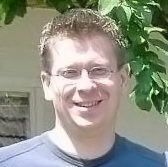
Lars Geyer-Blaumeiser
Safr@n: Combining Several DSLs to Analyze, Design and Generate Normalized Applications (in French)
10h05 - 10h35
In this talk, we will introduce the SAFR@N workbench used by the French Ministry of Defense to produce normalized applications. In particular, we will focus on the Studio based on Sirius. In the heart of SAFR@N, this Studio provides several domain specific languages (DSL) dedicated to the different activities involved in the creation of IT systems, from requirement analysis to code generation, including the design of services (SOA), GUI screen flows, database, etc.

Didier Féret
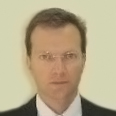
Arnaud Le Griel
EIP Designer: Filling the Gap Between Enterprise Architecture and Software Development
10h40 - 11h10
In this talk, I will introduce an open source designer for Enterprise Integration Patterns (EIP) based on Eclipse Sirius. The goal of this designer is to provide fluidity and continuity whilst filling the gap existing between Enterprise Architecture practices and concrete software development.
During this session, I will come back on project genesis and designer realization process. I will show you - through a real world use-case - how the combination of Sirius / EMF / Acceleo and Eclipse plugin technologies may be used to provide efficient, taylored thus extensible working environments."
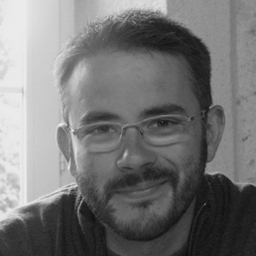
Laurent Broudoux
Experimenting the Open Source MBSE Solution Capella: the Industrials' Viewpoint
11h40 - 12h10
Capella is a Model Based Systems Engineering (MBSE) solution using Sirius for its diagrams rendering.
It has been initially developed in house by Thales and has been open sourced (in Polarsys) within the context of the CLARITY project. This was actually the very first step of CLARITY, which aims at developing and structuring an international ecosystem around Capella.
The CLARITY project now investigates customization capabilities for Capella and aims at complementing the ecosystem with a community that brings together major actors of the entire engineering value chain (industrials, integrators, technology providers and consultants, academia) for open innovation in MBSE within Capella.
In this context, Areva and Airbus Defence & Space already made lots of experimentations and are helping the ecosystem to mature up by providing feedbacks to the community. In this talk, you will get an overview of what those 2 Industrial companies have realized so far.
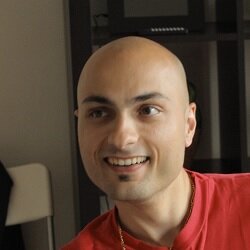
Christophe Boudjennah
Sirius Viewpoints and Software Modernization
11h40 - 12h10
When confronted to the task of modernizing a legacy application, we are often faced with the fact that the only available and trustworthy documentation of the software lies in its code base, that is usually very large and contains information not relevant to the migration. It is important to be able to extract its essence, such as business rules, while leaving out the technical details not pertinent to the new architecture.
In this talk, we will discuss how a model-based approach can help modernization projects with mining the necessary information from the code, and how Sirius and its viewpoints support the migration process by providing cunning notations and powerful tooling to describe different aspects of a system at the right level of abstraction and in a way understandable to the many stakeholders of such project.
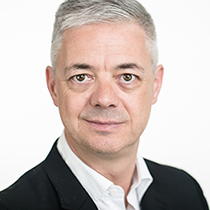
Stéphane Barbey
eWORMS, the eclipse WORkflow Management System for Flight Physicists at Airbus
12h15 - 12h45
Reading this title, two questions should come to your mind: again a new workflow tool? What can bring eclipse and Sirius which does not already exist?
The first question has obsessed us during the whole incubation phase of eWORMS, especially because as Flight Physicists we are generally users of workflows to support our trades, rather than developers. And indeed there are plenty of tools to do workflows on the market, promising easy integration, automation, customization, evolution… whatevertion! But in the end, nothing’s magic: you still have to develop quite a lot wrapping your tools, coupling data from one to the other, managing the failures… all that in a non-IDE tool. And when you need a domain specific workflow feature, the tool is simply not opened to extensions.
You now have an idea of the answers to the second question: what can bring eclipse and Sirius? Extensibility, powerfull IDE… we’ll show in particular how Sirius over EMF allow us to create with minimum development efforts – and thus reasonnable timescale – an extensible workflow modelling product, with graphical capabilities not only at the level of commercial products, but also able to support smartly our domain specific needs regarding workflow management.

Alexandra Boeuf
Sirius Roadmap
14h00 - 14h50
With almost 500 bugzillas between Luna and Mars.1 version, the Sirius team has been very active in bringing more goodness to the technology, most notably :
- improving and tweaking many aspects of the diagram user experience inherited by GMF enabling new capabilities in the Diagram editors : compartments, streamlined behavior when using images in your modeler
- enhancing the definition tooling through inferred types, search and navigation and validation constraints
- improving the scalability and performances of the runtime to support models having 1 million of elements with no fuss
This session is going to walk you through demos and technical explanations of what is going on behind the scene.
Attendees will leave with a clear understanding of what this new version brings, but also how everything works together, what are the trade-offs to consider and what can be expected from the future versions.
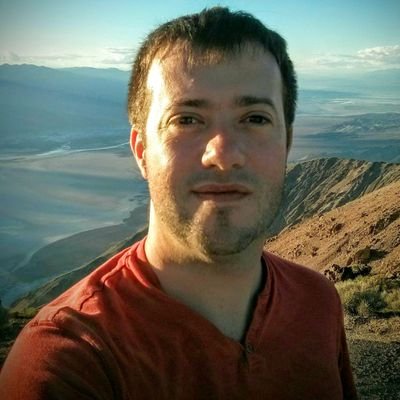
Cédric Brun
Sirius Tutorial
14h55 - 17h35
This tutorial will guide you creating a first modeling tool using a wide range of Sirius features.
Both beginners and experienced Sirius users can participate to this tutorial. From a starting sample provided at the beginning of the session, you will discover how to easily implement the features that makes the difference with a basic modeling tool: advanced edition tools, conditional graphical rendering, layers, validation rules and quick fixes, tables, etc.
Come with your laptop and leave the tutorial with a dsl-based tool providing advanced modeling features.
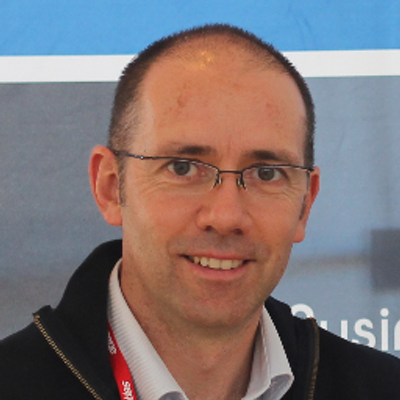
Frédéric Madiot
All the Little Things That Make Your Graphical Tool Shine (or not)
17h05 - 17h35
Want to be proud of the modeling tool you have created with Sirius? Need to boost its adoption?
What better way to make your users happy with their tool and also proud of their diagrams?
In this talk you will learn how to make good use of many Sirius features that will help you enhancing the graphical rendering of the diagrams and improve the user experience: color palette, images, edition and navigation tools, etc.

Loredana Chituc
Collaborative Modeling with Sirius: from Model Fragments to Shared-Repository
15h30 - 16h00
Have you already tried to work on the same model with your team members? Then, you probably faces the problem of accessing a coveted resource! And you rapidly came to the conclusion that one single file for a model is not scalable on active teams.
In this talk we will explain the two main solutions that you can adopt to collaborate on a model with Sirius: splitting your model into several resources or store your model into a shared repository.
Tip & Tricks: How to Make Robust and Scalable Modeling Workbenches
14h55 - 15h25
You have already built a modeling workbench thanks to Sirius and you are going to deploy it on a large scale?
So you may need a deeper understanding on how Sirius works and learn about how to make your tool more robust and more scalable.
During this talk, you will discover how Sirius computes the elements to display in your modeler and how your Sirius configuration can impact the performance of your tool.
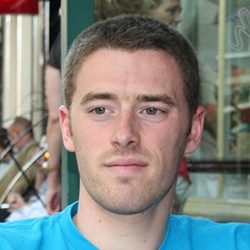
Maxime Porhel
Breathe Life into your Designer!
12h15 - 12h45
You have your shiny new DSL up and running thanks to the Eclipse Modeling Technologies and you built a powerful tooling with graphical modelers, textual syntaxes or dedicated editors to support it. But how can you see what is going on when a model is executed ? Don't you need to simulate your design in some way ? Wouldn't you want to see your editors being animated directly within your modeling environment based on execution traces or simulator results?
The GEMOC Research Project designed a methodology to bring animation and execution analysis to DSLs. The companion technologies required to put this in action are small dedicated components (all open-source) at a "proof of concept" maturity level extending proven components : Sirius, Eclipse Debug, Xtend making such features within the reach of Eclipse based tooling. The general intent regarding those OSS technologies is to leverage them within different contexts and contribute them to Eclipse once proven strong enough. The method covers a large spectrum of use cases from DSLs with a straightforward execution semantic to a combination of different DSLs with concurrent execution semantic. Any tool provider can leverage both the technologies and the method to provide an executable DSL and animated graphical modelers to its users enabling simulation and debugging at an early phase of the design.
This talk presents the approach, the technologies and demonstrate it through an example: providing Eclipse Debug integration and diagram animation capabilities for Arduino Designer (EPL) : setting breakpoints, stepping forward or backward in the execution, inspecting the variables states... We will walk you through the steps required to develop such features, the choices to make and the trade-offs involved. Expects live demos with simulated blinking leds and a virtual cat robot !
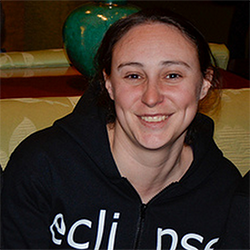
Mélanie Bats
Functional Modelling Tool for the Avionics Domain
10h40 - 11h10
Integrated Modular Avionics (IMA) introduces resource sharing between computing and networking components in an airplane. Clearly, the resource management must be robust and carefully designed. The European project ASHLEY addresses this issue with the development of new tools and processes for IMA design.
One of the first tools in the toolchain to be developed is the Function Modelling Tool (FMT). The main motivation for having FMT is to enable the platform architect to provide a centralized architecture definition with a unified information model. A successful implementation of FMT will:
- save time for system designer and system integrator
- replace or complement core configuration documents
- improve validation and traceability in initial design
The first step in designing a function (ATA) for avionics is to specify an initial architecture and initial resource needs such as memory, computing, networks. This specification is done by both the airframer system designer and external function supplier designers.
To support this process, the FMT defines a DSML that:
- support internal design processes
- integrate with existing distributed toolchain
- support iterative design with roundtrips between external tools
The presentation will discuss the quality the FMT DSML in terms of the 6C model quality criteria and how Sirius have contributed to the implementation and design. Initial evaluations have shown that FMT has the potential to fulfil its objectives of replacing core configuration documents and provide valuable input to architecture specification processes.

Ståle Walderhaug
Maxime Porhel, Obeo
Maxime works as a software developer at Obeo.
He is commiter on the Sirius project and also involved in the development of Obeo Designer Team.
He has been working on the Sirius technology since 2008.
In addition, he is also a Sirius trainer and speaker at EclipseCon.
Hands-On Clinic
Need to get feedback on your projects or solve your specific Sirius-related issues?
Take the opportunity to meet the Eclipse Sirius committers at the Sirius Clinic. Bring your laptop, and a list of questions. We'll do our best to help.
Space is limited, pre-registration is recommended. To book an appointment (30 mn slots), please send us an email to
siriuscon@obeosoft.com
EMF-IncQuery: Blazing Fast Reaction Times Even for Very Large Diagrams
This talk introduces an extension to Sirius that combines the advanced visualization features of Sirius with the power of live model search provided by EMF-IncQuery
to define automatically synchronized views. EMF-IncQuery, the state-of-the-art live model query engine of the Eclipse ecosystem, avoids the recalculation of views from
scratch after each individual source model change, and provides blazing fast reaction times even for very large diagrams.
The highlights of the talk are:
IncQueries for interpreted expressions: We demonstrate how we integrated the IncQuery query language into Sirius to provide an alternative high-performance interpreted
expression language besides the built-in AQL. As a novelty, our approach supports automatic diagram updates by change impact analysis by initiating a refresh only when a
change in the source model affects an element in the view.
Live abstractions: We highlight how easy it is to define additional non-persisted derived views based on a combination of a Sirius diagram definition and a set of queries
on your original model. Such live abstractions can provide a significant boost to the usability of your modeling tool, by giving the user the ability to create abstract or
compact and automatically updated graphical views of their models, without Java coding.
Scalability: Finally, we present an initial scalability measurement to demonstrate how our query-driven views can scale up to industrial size models (the “one million model
element” challenge) within a cyber-physical system context.
This work is being developed in collaboration between IncQuery Labs Ltd. and the Fault Tolerant Systems Research Group of the Budapest University Technology and Economics
(BUTE). BUTE’s participation is partially funded by the CONCERTO EU Artemis project.
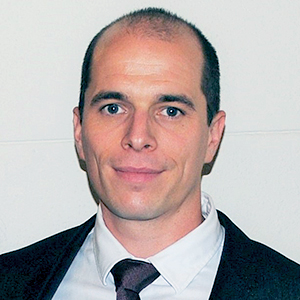
Ákos Horváth

Ákos Horváth, IncQuery Labs
Ákos Horváth received both his MSc in Computer Engineering and his PhD in Software engineering from the Budapest University of Technology and Economics.
He is an accomplished researcher with strong background on the application of model-driven technologies for the design and optimization of complex systems
with more than 40 peer-reviewed papers and several IEEE/Springer best paper awards under his belt.
Since 2006, he is a regular participant of European Union research projects such as SENSORIA, DIANA and CONCERTO and large-scale industrial projects with companies such as
Embraer, IBM or Ericsson. With more than 6 years in the avionics domain, he gathered significant experience in certification processes (such as DO-178B/C) and long-term
traceability techniques. Additionally, as a distinguishing achievement, Ákos was part of the Progile team, which has won the Supply Chain Technology Award at the 2012 European
Supply Chain & Logistic Summit for realizing an optimization approach for the IBM data storage server production at Vác.
He is a long-time contributor of Eclipse open source projects, serving as one of the architect of the VIATRA model transformation platform and the EMF-IncQuery model query framework. He is a skilled trainer and consultant in software development, model-driven development and Eclipse technologies.